6 Ways on How to Deploy Software
The deployment phase of software development is crucial for making the product a success. Software deployment is the process of making the software accessible to others. Deployment involves the creation of files, typing out help documents, and other important steps to make the software usable by others. Therefore, it is crucial to make this process as smooth, efficient and error-free as possible using different techniques. Software developers have a number of options to make the deployment as efficient and error-free as possible. The methods can differ, depending on factors like platforms or file packages deployed. We explore seven different ways developers can deploy software. Some of these methods are automated, while others are designed to work on different platforms like Mac.
There is no best way to deploy software due to different circumstances like types of file packages and platforms. There are several options available to developers to deploy software remotely. We explored several options for deploying software. These options include software policies, utilizing active directories, the network and different platforms. The process can be automated or monitored by a human depending on the developer's preference. We explore different methods, like how to deploy software over the network. Choosing the best method involves due consideration of time, productivity, and need for efficiency. As the best PDF Software to deploy for business, PDFelement Pro will help you to manage your PDF documents.
Part 1. How To Deploy Software To Multiple Computers
If software developers are looking to deploy software to multiple computers at the same time, the best option is to use a deployment tool that utilizes a network.
It is recommended to store a backup copy of the software before deploying it. If you are using EaseUS Deploy Manager, then you should use EaseUS Todo Backup. The tool lets users store a backup image of the software. Users must launch the tool, select the software they want to backup, then select a destination path for the file. Make sure that all computers are ready for software deployment. Check if Microsoft DCHP is on the network. All computers you want to deploy are on the same LAN and enable PXE server.
Step 1. Open EaseUS Deploy Manager, select 'Create group' and name the new group. This method is similar to other deployment processes like how to deploy software on a network.
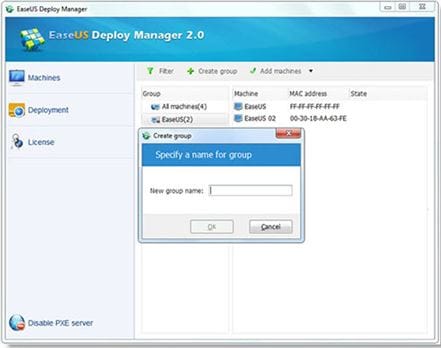
Step 2. Click on 'Add Machines' to add computers. Computers can be added to address and file.
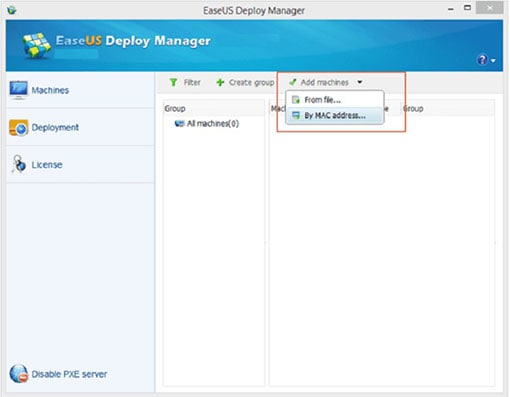
Step 3. Click create and enter a task name, select machines added in step 2. Click Next. This process is done to create deployment task for installing a task name.
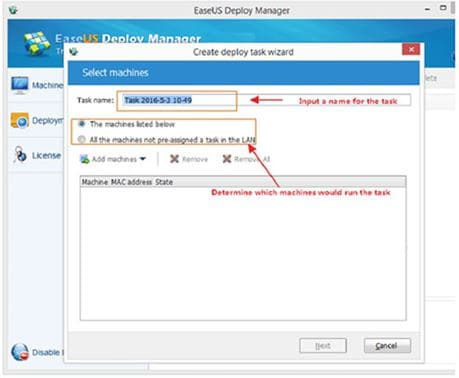
Step 4. Choose the created task and click 'Run' to run the deployment task. The software will be installed on several computers, the process will take small time.
Part 2. How To Deploy Software Remotely
The best option for remote deployment is to deploy software to networked computers. Linking several computers through a network saves time because most software for remote deployment is designed to deploy across a network. Therefore, finding and adding computers to a network is easy to accomplish. Using the Remote Installer software, we will explain how to deploy software across network remotely.
Step 1. This method will deploy software across network. Therefore, first step is to set up the network to receive other PCs and ensure all technical requirements are met. This process involves checking the remote PC's to make sure they have the corresponding network software and nodes installed and running. You must also use a PC that has administrative rights over the remote PCs. If the plan is to install EXE packages you must first test EXE installations for silent deployment. If required technical expectations are not met, then it is not possible to install software remotely.
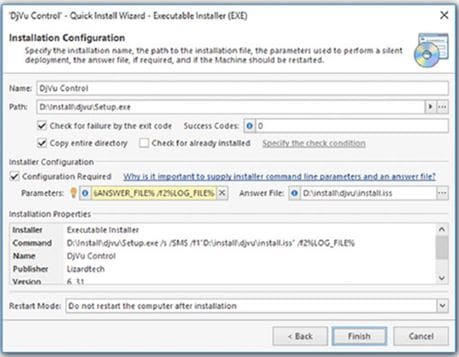
Step 2. The easiest method to deploy software over network is to use the 'Quick Install' method. Use Quick Install option, to bring up a network. The Network view will list all the connected PCs. The Network does not just list PC's, it is possible to select root Network domains, workgroups, and organization units. Therefore, it is possible to connect groups of PCs with a single click. Select all remote PC's and click 'Quick Install'.
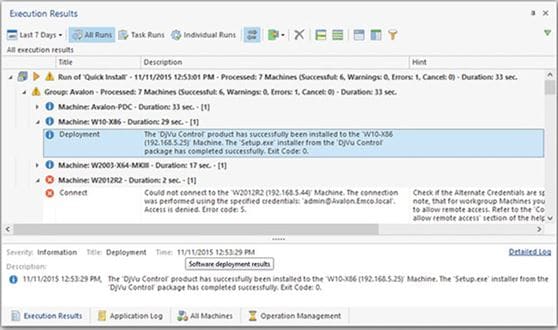
Step 3. A dialogue will appear, prompting the user to select the package summary to be installed. If the package to be deployed is an MSI file, click OK, after selecting the package summary. If it is an EXE package, the silent deployment settings must first be selected before choosing to deploy software over network.
Step 4. The remote installer will install software at the same time. The deployment operation can be monitored from a window called 'Operations Management'. The operation can even be cancelled at any time.
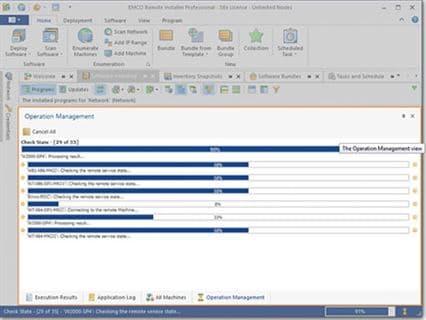
Part 3. How to Deploy Software Using GPO
How to deploy software to multiple computers? GPO is the answer. GPO stands for Group Policy Objectives, it refers to settings that allow an administrative user to take control of a group of PC's through a network. Through a GPO, an administrator can dictate policies, software installation, scripts, and options. GPO's are associated with Associated Active Directories, these directories contain domains and websites.
Hence we are going to discover how to deploy software GPO. The steps are relatively easy to follow, and software should be deployed quickly and efficiently using this method.
Step 1. The first step is to configure Group Policy. Log in as administrator and place installer package on the shared network folder. Set permission on the folder to share. Activate Directory users and computers through the folder. After creating the group policy name. Go to properties and select Securities. Set the necessary policy and select OK.

Step 2. Go to Group policy tab and create a new policy name on the group policy tab. Click 'Create GPO domain name' and add group policy name.
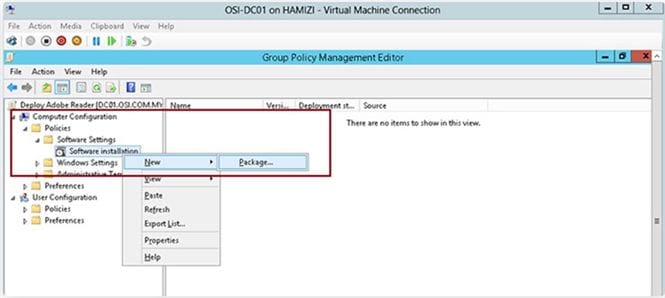
Step 3. The third step is to assign a package. To complete this step you must assign a UNC. UNC stands for Universal Naming Convention; it is the means by which resources on a network are identified. The installer package will not work without UNC. Under the name, you just entered in Group Policy select 'Edit'. Go to Software settings under Computer Configuration. Set the path for the installer by assigning the UNC. Click on 'Software Installer' go to 'New' and select 'Package'. The package you need will be listed on the right side of Group Policy Interface.
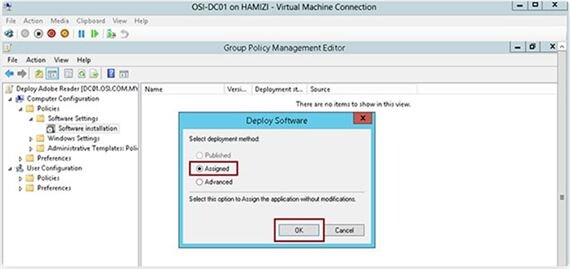
Step 4. The final step is to deploy the software. To accomplish this close 'Group Policy' and 'Active Director' tabs to exit. Turn on the computers to start software installation.
Part 4. How to Deploy Software to Macs
How to deploy software on Macs? The process is slightly different compared to Windows. Software deployment on Macs is a smooth, and relatively easy to complete. However, users must meet the appropriate conditions before deploying software effectively. Configuration Management Application and the 'Create Application Wizard' are crucial in deploying software on MAC's.
Step 1. The first step is to prepare MAC applications for the Configurations Manager. To complete the process, the CMAPPUtil tool must be used on a MAC computer, and convert to programs .cmmac files.
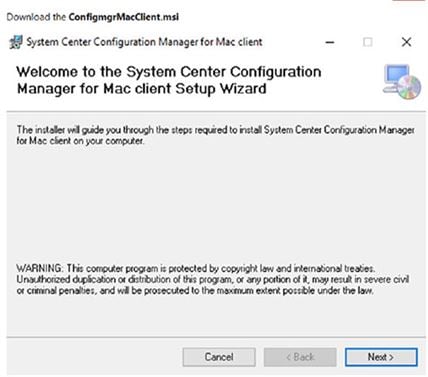
Step 2. After prepping the programs, use the 'Create Application' Wizard to create new applications for MAC software. To complete this step, go to the Configuration Manager console, and click 'Software Library'. Go to 'Applications Management' and choose 'Applications' Go to the Home tab, and choose 'Create Applications' in the 'Create' tab. Select 'Automatically detect information about this application from installation files.' On the drop-down list named 'Type' select Mac OSX. Use the 'Location' and Browse' field to specify the UNC path and installation file location respectively.
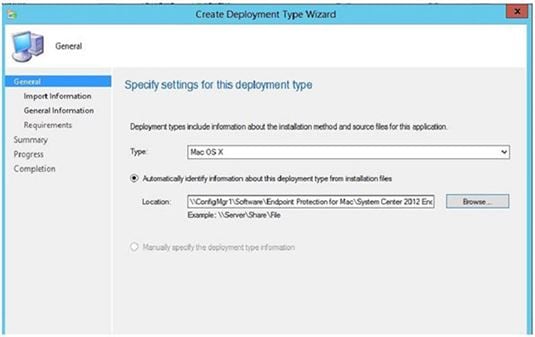
Select 'Import Information' on the 'Create Application Wizard' review the information and click 'Previous' and make corrections. On 'General Information' page to specify information about the application. Click 'Next', review the application information and then complete the Create Application Wizard. The new Application is displayed under the 'Applications' node of the Configuration Manager console.
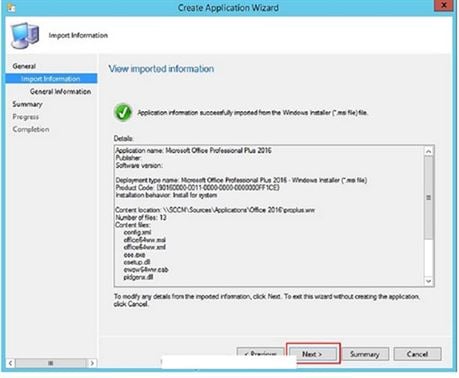
Step 3. Users may have to create a deployment type for Mac software. The step is necessary only if information from the application is not imported into the system.
Step 4. Deploy the MAC application onto target PC's by using the 'Deploy Software Wizard'.
Step 5. Monitor the software deployments to check if it was successfully deployed.
Part 5. How to Deploy Software to Windows Server
It is imperative to know how to deploy software with Windows operating system because of most uses in a professional and personal environment. Whether users want to deploy software on multiple computers or a single PC, Windows server is a versatile tool, suitable for the job.
Step 1. Download the Microsoft Installer and save it to the shared network folder on the Windows Server. For the operation to be successful, every PC on the network must agree to share permissions. The Microsoft Installer is a .msi file.

Step 2. The second step is to modify the Microsoft Installer. The ORCA tool is needed to perform this task, it is part of Windows SDK and can be downloaded from the Microsoft website. Modifying the installer means giving the license name and license code. Select the 'Property' in the Tables, Find and change the value of the property from “PROP_LICENSENAME” to the given license name, and “PROP_LICENSECODE” to the given license code.

Step 3. The final step is to deploy a .msi file with Domain Policy Management. Select 'Group policy management' in the 'Administrative Tools' section. Find your domain in the 'Console tree'. Right-click 'Default Domain Policy' and click 'Edit'.
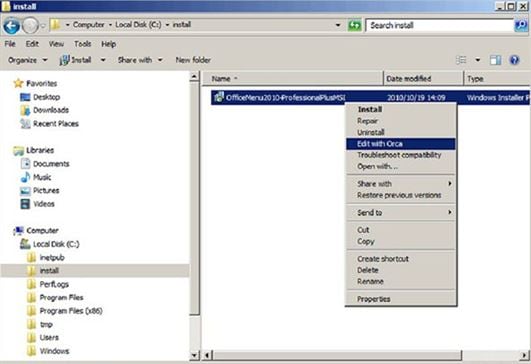
Step 4. Go to 'Computer Configuration' and expand 'Software Settings'. Right-click 'Software installation' point to 'New' and then click on 'Package'. Open a dialogue box and choose the MSI package in the shared network folder. Select the package in the Network, begin with // but avoid selecting a folder with the name 'Computer'. Select 'Open'.
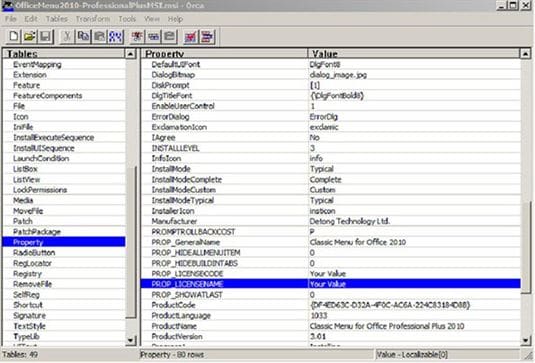
Step 5. One reason why Windows server is so efficient is because it deploys software through an active directory. Click 'Assigned' and choose 'OK', the package will be listed in the right pane of the Group Policy window. Close the Group Policy snap-in, click 'OK' and quit the Directory Users and Computer snap-in. Once the computers are started, software deployment starts.

Part 6. How to Automated Deploy Software
Automation software deployment is the best way to deploy software. It reduces the chances of human error and saves a developer's time. If software deployment is to be automated, then it is important to select the right deployment software. There are different options for deploying software, the program DeployBot will be used to demonstrate how it is possible to deploy software using automation.
Step 1. After creating an account with DeployBot, users must add a repository to the account. One method to accomplish this is to authorize your GitHub account and connect the repository to the Deploy Bot.
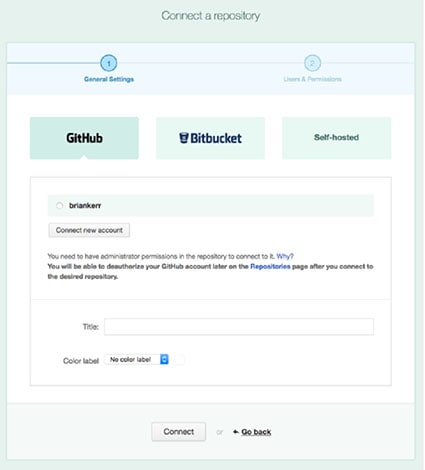
Step 2. After connecting the repository, the next step is to create a suitable environment, where servers must be added and deployments are managed. Fill out the information the page, by giving the name, deployment model and the branch from which the software is to be deployed from.
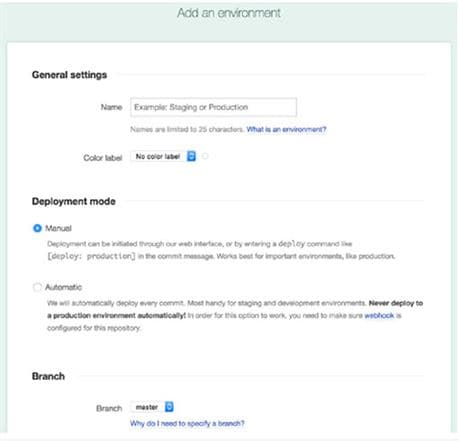
Step 3. Adding a server is the third step on deploying software is to add a server. DeployBot gives a variety of options. When choosing the server, it is important to consider two options: 'Source Path', which is where directory in the repository's branch deploys from. Destination Path is the root deployment location on the server.
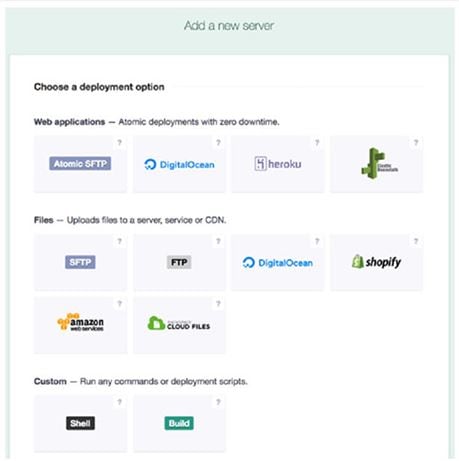
Step 4. After the server is connected, the software is ready to deploy software through active directory. Users need only push the code into the remote repository to start deploying software. However, if users choose manual deployment, they can trigger the deployment with two different options. There is a 'Deploy' button in the 'Environment' page.
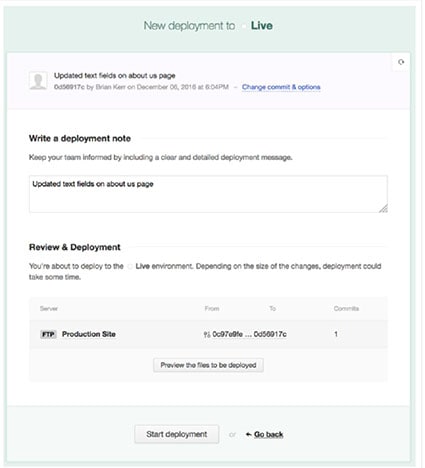
Part 7. The Best PDF Software to Deploy for Business
PDF software is an invaluable asset for anyone in business, but it is a read-only document. Hence, if there is a mistake in a document, then it is impossible to make changes without having the right software. Hence, you must download PDFelement Pro, the software makes it possible to edit PDF documents as if they were Microsoft Office documents.
PDFelement Pro offers the following features:
- Fill, and create fillable PDF forms with ease.
- Automatic form recognition turns old office forms into interactive PDF forms.
- Extract data from PDF forms with a single click.
- Edit text, pages, and images in PDF files.
- To highlight, underline and strikethrough on the PDF documents.
- Edit and convert scanned PDF files with advanced OCR feature.
- Convert multiple PDF files to Word, Excel and other file formats in batch.
The software is highly reviewed, customers who have used PDFelement Pro praised the software for its ease of use and a wide range of functionalities. Some reviewers have even called it a suitable replacement for Adobe Acrobat PDF. If you are interested in using PDFelement Pro there is a free trial you can find on the official website. There are two official versions of the product, one for MAC and another for Windows. PDFelement Pro is perfect for editing and using PDF documents as you please.






Ivan Cook
chief Editor